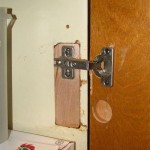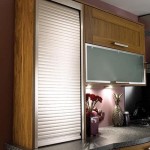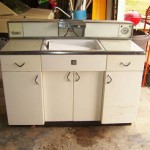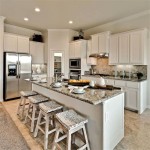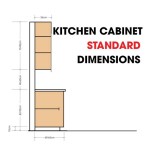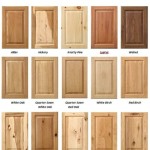Stainless Steel Kitchen Review: Durability, Aesthetics, and Performance
Stainless steel has become a dominant material in contemporary kitchen design. Its widespread adoption stems from a confluence of factors, including its recognized durability, aesthetic versatility, and hygienic properties. This article will provide a comprehensive review of stainless steel kitchens, examining key aspects relevant to prospective buyers and those seeking to understand the material's performance characteristics in a culinary environment.
The appeal of stainless steel extends beyond mere aesthetics. It represents a practical choice for homeowners and professional chefs alike, offering a robust surface capable of withstanding the rigors of daily use. Understanding the various grades of stainless steel, its maintenance requirements, and potential drawbacks is crucial for making informed decisions regarding its integration into a kitchen space.
Durability and Longevity
The inherent strength of stainless steel contributes significantly to its longevity as a kitchen material. Unlike wood or laminate, stainless steel resists water damage, staining, and heat degradation. This resistance translates to a reduced need for frequent replacements or repairs, potentially offering cost savings over the lifespan of the kitchen.
The resistance to corrosion, a hallmark of stainless steel, is due to the presence of chromium. This element forms a passive layer of chromium oxide on the surface, effectively shielding the underlying steel from oxidizing agents. This passive layer is self-repairing; if scratched or damaged, it reforms rapidly in the presence of oxygen, maintaining the integrity of the material.
While generally resistant to dents and scratches, stainless steel is not impervious to them. The gauge of the steel, often measured in thickness, plays a role in its susceptibility to such damage. Thicker gauges, while more expensive, offer greater resistance to dents and deformation. Therefore, careful consideration should be given to the gauge of stainless steel used in countertops, appliances, and other kitchen components, particularly in high-traffic areas or environments prone to heavy use.
The ability to withstand high temperatures is another significant advantage of stainless steel. This makes it an ideal material for backsplashes behind cooktops and for countertops adjacent to ovens. Stainless steel will not melt or warp under normal cooking conditions, ensuring the safety and longevity of these critical kitchen surfaces.
Aesthetic Versatility and Design Considerations
The sleek, modern appearance of stainless steel aligns well with contemporary kitchen design trends. Its neutral tone complements a wide range of color palettes and design styles, from minimalist and industrial to transitional and even farmhouse aesthetics.
The reflective surface of stainless steel can contribute to a brighter and more spacious feeling in the kitchen. This is particularly beneficial in smaller kitchens or those with limited natural light. However, this reflectivity can also be a drawback, as it can highlight fingerprints, smudges, and water spots, requiring regular cleaning to maintain a pristine appearance.
Beyond its color and reflectivity, the texture and finish of stainless steel can significantly impact the overall aesthetic. Brushed stainless steel, for example, features fine lines that help to conceal scratches and fingerprints, while polished stainless steel offers a more reflective, high-gloss appearance. Embossed or textured stainless steel can add visual interest and dimension to kitchen surfaces.
The integration of stainless steel into a kitchen design should consider the scale and proportion of the elements. An overabundance of stainless steel can create a sterile or clinical atmosphere. Balancing stainless steel with warmer materials, such as wood, natural stone, or textured tiles, can create a more inviting and balanced space.
Stainless steel appliances, a common feature in many kitchens, offer a cohesive look when paired with stainless steel countertops, backsplashes, or cabinetry. However, it is important to note that "stainless steel" appliances often feature a stainless steel veneer over a different material, such as plastic or painted metal. The quality and durability of this veneer can vary, and it is important to inspect it carefully before purchasing.
Hygiene and Maintenance Requirements
Stainless steel's non-porous surface makes it highly resistant to bacteria and mold growth. This is a significant advantage in the kitchen environment, where food preparation and sanitation are paramount. The smooth surface of stainless steel allows for easy cleaning and disinfection, reducing the risk of cross-contamination.
Maintaining a stainless steel kitchen requires regular cleaning with appropriate cleaning products. Abrasive cleaners should be avoided, as they can scratch the surface and damage the protective chromium oxide layer. Instead, mild detergents, specialized stainless steel cleaners, or even simple solutions like vinegar and water can be used to remove dirt, grease, and fingerprints.
Water spots and fingerprints can be a persistent problem on stainless steel surfaces. To minimize these blemishes, wiping down the surface with a clean, dry cloth after cleaning can be effective. Specialized stainless steel polishes can also be used to protect the surface and reduce the visibility of fingerprints.
While stainless steel is generally resistant to staining, certain substances, such as acidic foods or harsh chemicals, can cause discoloration if left on the surface for extended periods. Prompt cleaning is essential to prevent permanent staining. Regular maintenance and preventative measures will ensure cleanliness and lasting appearance.
The seams and joints in stainless steel countertops and backsplashes can be potential areas for bacteria and mold growth if not properly sealed. It is important to ensure that these seams are sealed with a high-quality, food-grade sealant to prevent the accumulation of moisture and debris.
Electrolytic corrosion, sometimes referred to as galvanic corrosion, can occur when stainless steel comes into contact with dissimilar metals in a moist environment. This type of corrosion can lead to pitting and weakening of the stainless steel. To prevent electrolytic corrosion, avoid direct contact between stainless steel and other metals, such as aluminum or copper, and ensure that all fasteners and hardware are made of stainless steel or other compatible materials.
The hygienic properties of stainless steel extend beyond countertops and appliances. Stainless steel sinks are also a popular choice for kitchens due to their resistance to staining, scratching, and bacteria growth. Choosing a sink with a deep bowl and a sloped base can further enhance its functionality and ease of cleaning.
Implementing a strict cleaning regimen combined with appropriate cleaning agents and maintenance will keep the stainless steel surface appealing for many years.
Ultimately, a stainless steel kitchen requires dedicated care and routine upkeep. While its durability is undeniable, neglecting to clean and maintain it will diminish its aesthetic appeal and potentially compromise its hygienic properties. By understanding the characteristics of stainless steel and implementing appropriate maintenance practices, homeowners can enjoy the benefits of this versatile and long-lasting material for years to come.

Kitchenaid Stainless Steel Cookware Review An Update You Ll Love Start With The Bed

Metal Kitchen Cabinets Review The Blog

A Review Of Stainless Steel Kitchen Sinks

Stainless Steel Kitchen Residential Review Steelkitchen

Our Stainless Steel Farmhouse Sink 100 Day Review A Piece Of Rainbow

Reviews For Delta Lorelai 16 Gauge Stainless Steel 32 In Single Bowl Undermount Workstation Kitchen Sink With Accessories Pg 1 The Home Depot

Reviews For Delta Lorelai 16 Gauge Stainless Steel 32 In Single Bowl Undermount Workstation Kitchen Sink With Accessories Pg 1 The Home Depot

Frigidaire Black Stainless Steel Appliances 2024 Reviews 53 Off

Our Stainless Steel Farmhouse Sink 100 Day Review A Piece Of Rainbow

Reviews For Delta Emery Stainless Steel 30 In Single Bowl Undermount Drop Workstation Kitchen Sink With Accessories Pg 1 The Home Depot
Related Posts


